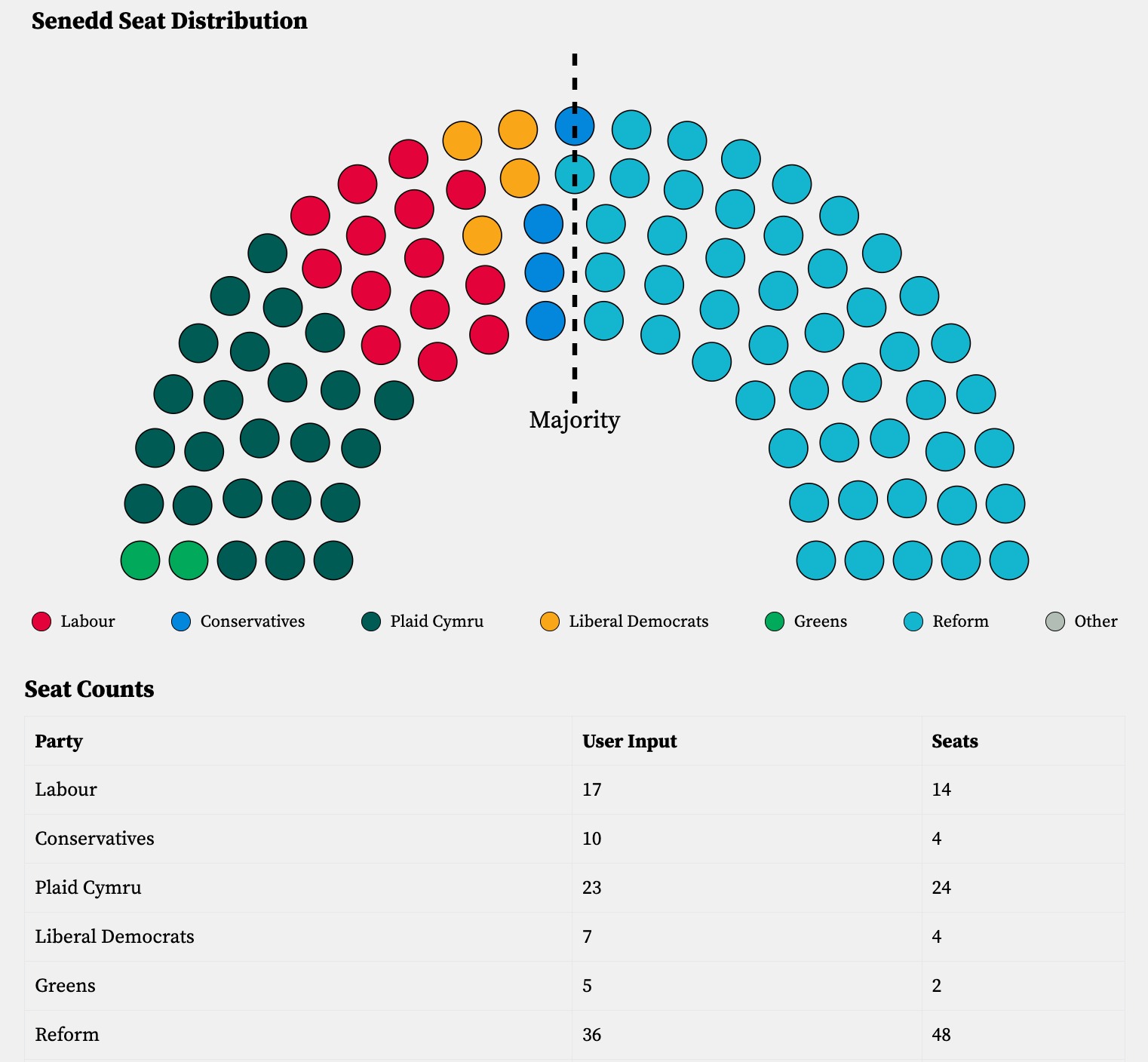The 2026 Senedd and Scottish Parliamentary elections are set to be the largest test of Reform’s support before the next general election (sometime before the summer of 2029).
Nigel Farage’s latest party has ridden a wave of anger at both Labour and the Conservatives by pushing simplistic and controversial solutions to what he perceives as the UK’s biggest problems.
The party looks set to win a significant number of seats in both Scotland and Wales, but real questions remain.
Can they win a constituency seat in Scotland? Could they become the largest party in Wales?
And more broadly, what does this mean for our politics going forward.
Reform in Wales
Labour have governed Wales continuously since devolution in 1999, often with some support from the Lib Dems or Plaid to push them over the majority line. Labour have come back as the largest party at every devolved and general election in Wales for a century, and they traditionally dominate most councils. The only Welsh elections that Labour haven’t won since before the Second World War were the 2009 and 2019 European Elections. In 2009 they lost narrowly to the Conservatives but were beaten badly by Farage’s Brexit Party in 2019, so there is some precedent for this.However, since taking power at Westminster level in July 2024 Labour have declined markedly across Wales whilst the Tories have not recovered from their humiliation at the same election. The gap has been filled by both Plaid Cymru and Reform.
Reform have routinely exceeded 20% in Welsh polls since November 2024 and have peaked at 25%. According to today’s Nowcast they’re on course to win 26 seats which would put them in third place, just 1 seat behind Labour and 2 behind Plaid Cymru. There have been very few polls recently so the Nowcast has big error margins, so it's best to think of Labour, Plaid Cymru and Reform as being in a statistical tie. They’re especially strong in eastern areas and along the south coast, outside of Cardiff.
Reform could end up as the largest party, but this doesn’t mean they get to govern. They need 51% in the Senedd to get the First Minister position so they aren’t close to that on their own. Farage will need to gain more votes and find a buddy if they’re going to govern with the Conservatives being the obvious choice. Unfortunately for Reform, they’ve already eaten half of the Tory vote so there won’t be a lot of them left to ally with.

Reform vote share needed for a majority
Reform would need the Tory vote to hold up and add a solid chunk from Labour to get over the line with the Conservatives. Alternatively, they could win an outright majority on their own if they won at least 37%, provided they crushed the Conservatives even more and ate into Labour’s vote. This would leave a scattered opposition and give them a tiny majority.
Currently, it looks much more likely that some form of Labour - Plaid Cymru alliance will form the next government with both on a similar number of seats. How they’d handle this remains to be seen, but Irish style rotating leaders could be on the agenda.
Reform in Scotland
Reform are not doing as well in Scotland as they are in Wales but they are still on 15.5% on our Nowcast List polling average and 16.4% on the constituency ballot. That’s enough to win 17 seats, more than the Lib Dems and the Greens, and Conservatives and just 1 behind labour. Reform are within the margin of error of becoming the official opposition to the SNP.

Current Scottish Nowcast
On these numbers they are only going to win list seats so they’ll need a few more votes if they want to start adding constituency seats. Dumfriesshire is the first to go in our model at about 19% but there are a few solid hopes for the party across the Borders, Aberdeenshire and the Central Belt which all start to flip in the low 20s. The most recent Norstat poll from The Times puts them within touching distance in a handful of places and the upcoming by-election could give their perception of electability a boost.
In Holyrood there is no difference between list and constituency seats, but if Reform want to pick up seats in Scotland at the next general election they’ll need to prove they have well defined areas of strength.
Perhaps a more important outcome of Reform’s rise in the polls is the further splintering of the unionist vote. In previous years the SNP would be in trouble if they could only muster 33%, but now that could bring them very close to a majority. This is because the system is only semi-proportional.
There are more non-proportional constituency seats than proportional list seats, so running up the numbers in the constituencies is the best strategy. The SNP are the largest party across most of Scotland, and whilst there are very few places where they look set to win 50% or more, there are also very few places where they’re going to get less than 25% which is about as much as the average vote share of the second placed party in our Nowcast. With Labour, Reform, the Conservatives and Lib Dems all fishing from the unionist pond, it should allow the SNP to win far more seats than their vote share suggests.
This is the same thing that happened in the UK general election of 2024, Labour won 33.7% but won 63.3% of the seats because everyone else was so split. The regional list ballot will help dampen this down in Scotland because the SNP are unlikely to win any list seats at all.
